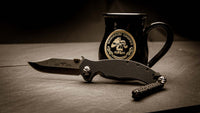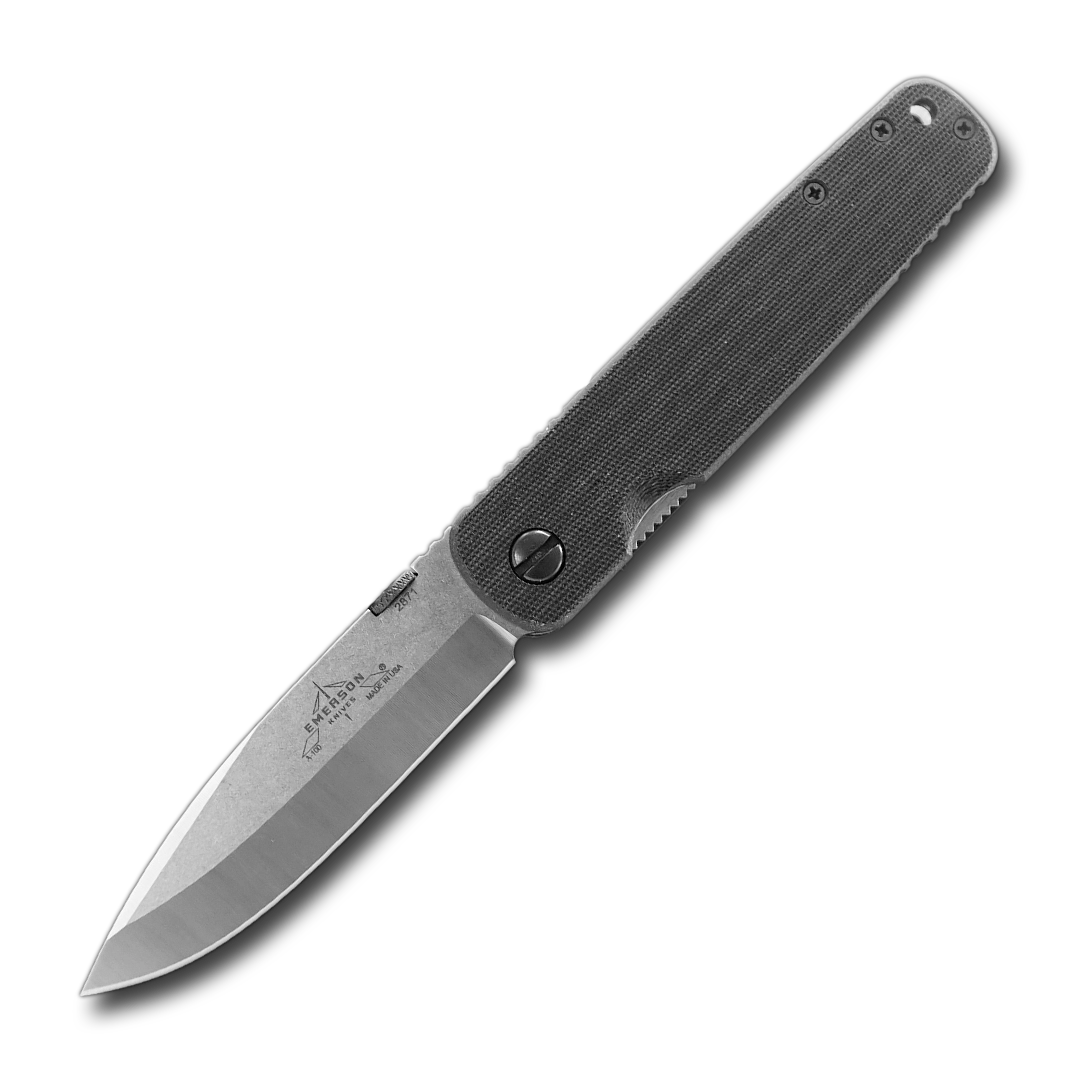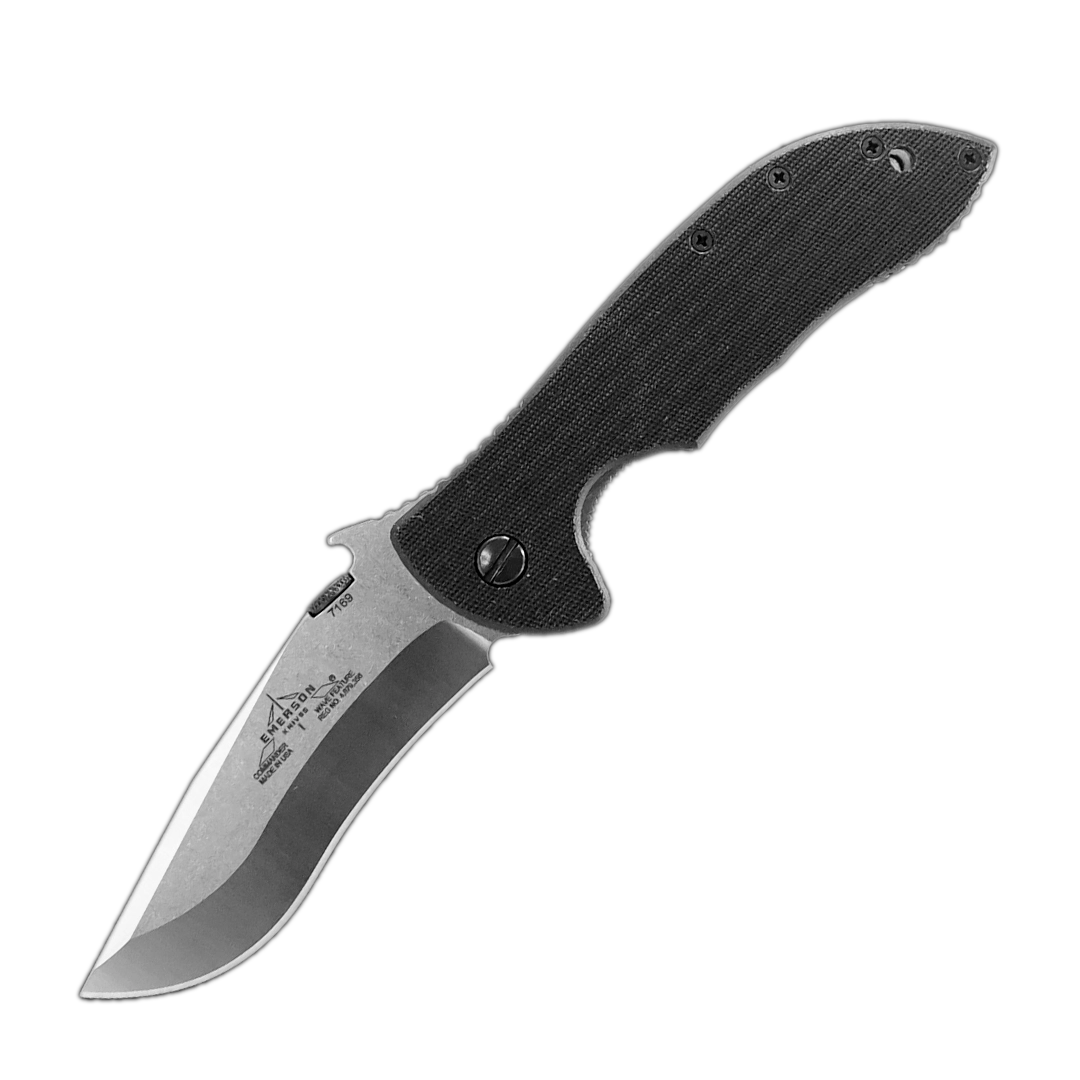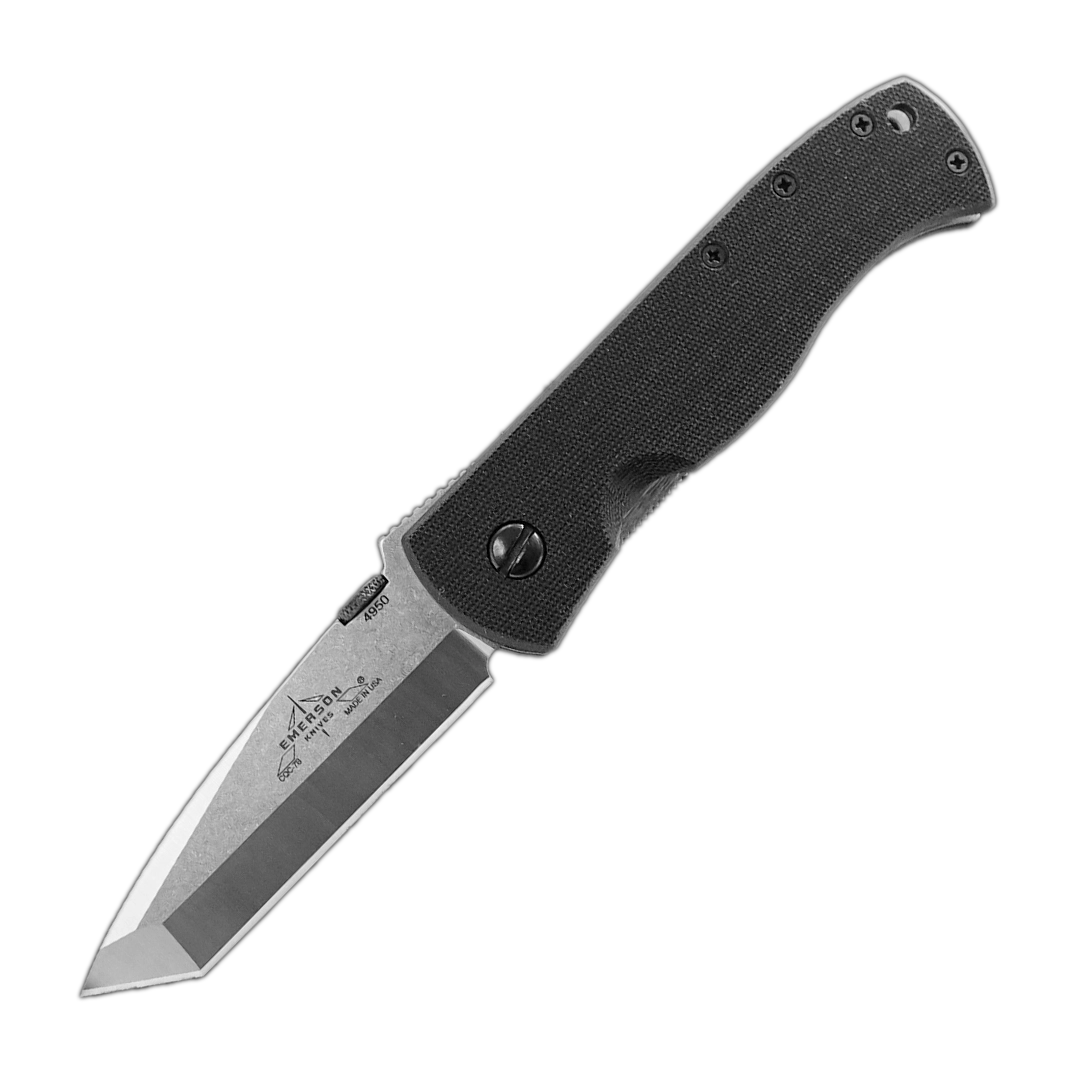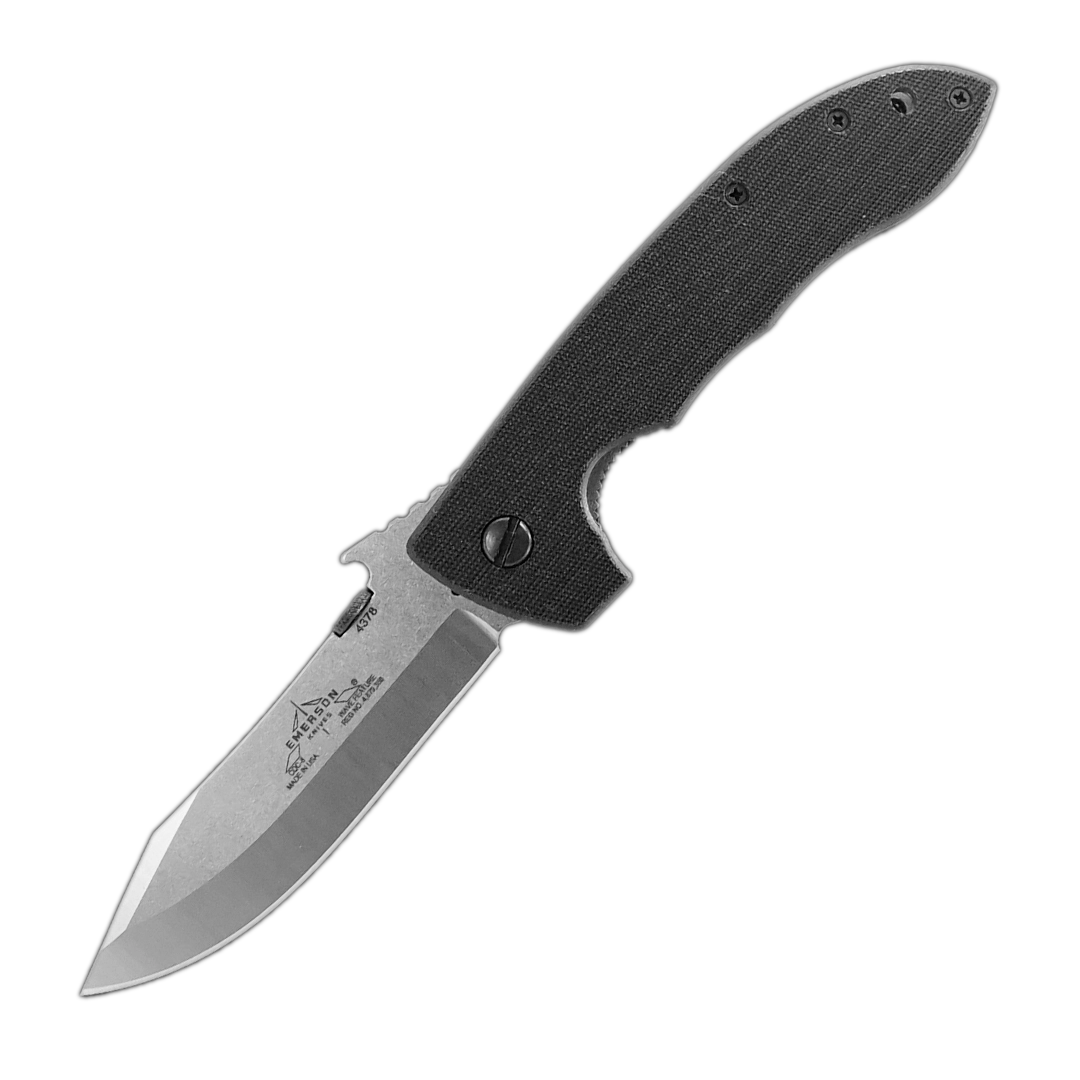What is a Tactical Knife? Every Knifemaker and Knife Company makes them. Everyone seems to carry one. Or do they?
Well, first let me say this: I’ve heard some people (Knifemakers/Knife Companies) say the following: “There’s no difference between a “regular” knife and a “Tactical Knife. They’re the same. One’s just colored black.”
I ask this question: Is there a difference between a “Combat Handgun” and a “regular” handgun? Damn right there is. But unless you know what those differences are, you can’t tell the difference. It has a barrel, a handle and it shoots, just like every other gun. However, there are differences and to the educated or experienced, these subtleties can under extreme use spell the difference between life and death. And just as with any tool or weapon or tool designed for extreme use, there is also a difference between a “Tactical Knife” a “regular” knife. Let’s take a look.
1.Design and Purpose of the Knife
First off, the design must reflect the needs and tasks of the user in the environment they operate in. When NASA asked me to design a knife for the International Space Station, they gave me a list of tasks the knife would be used for, including some that were very specific and unique. I designed the knife from the very start, to fit those needs. When the US Navy asked me to design a rescue knife for their Special Boat Units (SBU), they gave me a list of tasks the knife would be required to perform. I designed the knife specifically to address those tasks. The request for this knife came as a result of a tragic accident in which a number of U.S. Marines and Navy Corpsman drowned in a Helo crash. The rescue knives the SBU units had been issued were “regular” knives that self-destructed in their hands as they were trying to cut the trapped Marines and sailors free before the helicopter sank. Those “regular” knives didn’t work
The purpose of the knife will dictate what knife you should get. A door kicker will need a different knife than a detective.
So, what is a tactical knife? There is not just a simple answer to that question. So, let’s ask a couple of questions. Is the knife a weapon? Is the knife a utility tool? Is the knife an emergency rescue tool? Is the knife an entry tool? In real application it will probably be some combination of all of the above. Depending on your job requirements you may need two or even three knives – not to carry, but as part of the gear you would need to choose to kit up for specific operations. These are some of the questions you should ask yourself before making your decision about the knife you will choose to purchase and carry.
An undercover officer going into a potentially hostile environment will have completely different requirements than a SWAT officer. I have made knives for undercover agents that used turquoise and pastel greens for the handles, so the knives did not have a “cop” look to them. In a couple of instances, the bad guys didn’t even take the knives away after patting those undercover officers down. Were these “tactical” knives? Ask those police officers.
2.Ergonomics
Ergonomics is one of the most important aspects of Tactical Knife design. Without getting too technical, knife ergonomics are simply this: The knife must feel comfortable in your hand. Now, I’ll get a little more technical. It must feel comfortable when you use and handle it under stress. There must be no pinch points, sharp corners, or unnatural feel to the handle. Now, it must feel that way in both a forward grip (blade coming out of the top of your closed fist) and in a reverse grip (blade coming out the bottom of your closed fist). This is where we separate the knife designer from the graphics designer. There should be no convoluted contours or sculpturing of the handle. Watch out for over-pronounced finger grooves which will force your hand into a pre-fixed position. There should be a place for the fingers to go that allows them to fall into position naturally, but the shape should not force them. There should be no hard corners or uncomfortable or over-pronounced jimping anywhere on the handle or placed in an area that can cause abrasive, pinch points on the handle. There should be no sharp edges anywhere on the design except where it's supposed to be – on the cutting edge of the blade. Crazy blade shapes and multiple grinds have no place on a user knife. They are too complicated for most users to sharpen and paint the knife into a corner in terms of its overall and general utility use.
In reference to handle design, there are a couple of safety aspects to consider. If you notice on my knife designs, there is always a very generous (large) choil cut-out near the pivot before the cutting edge. This acts as a positive guard to prevent your hand from slipping forward and onto the cutting edge, so you ever need to forcefully jam or stab your knife into something with force. I once saw a guy almost lose all his fingers when he jammed another company's “tactical” knife into the tire of a semi-truck. We needed to stop it from bleeding, and he needed an immediate, emergency field dressing. There should be a reason for every design feature that's on a tactical knife and every design feature should be there for a reason. In my combat classes, there's a mantra that is continually stressed, “Never do anything without a purpose and never do anything that is useless.” It's not a coincidence that the same principle applies to knives and in fact to all combat and tactical gear.
And don't pick a knife that has a number of attachments or gadgets incorporated into the design. Forget about skull crushers or features that allow being able to switch grips, twirl, or “index” the knife in your hand while using it. Think about it this way, to access and deploy my knife in an emergency situation when my life or the lives of others may be hanging in the balance, would I be twirling my knife around, switching, or “indexing” grips? From personal experience, I'll just say this – “Not once, not one time – ever”.
Designed For Real World Use
Simplicity is the key to any effective tactical system designed for “real world use.” The more complex something is the more likely it will be to fail or break under extreme use. If you're not familiar with Murphy's Law as it applies to combat, it is this. “Anything that can go wrong will go wrong” – especially when you need it the most. It boils on to this. One part – one thing to fail. Two parts – two things to fail. Three parts – things start to fall apart, et cetera. See how the odds go up? And, of course, the simpler something is the more effective it always is. Think of the iconic Japanese Katana, a beautiful, basic, simple design, and as a weapon in the right hands, it is as effective today as it was 1,000 years ago. Get my point?
In addition, the knife should not be too large or too small for your hand but should be just right. A real tactical knifemaker can do this. Another option is to make small, medium, and large versions of a particular knife model. The bottom line is that your knife should feel like it fits you, in size, shape and weight. One of the greatest compliments I get is when someone picks up one of my knives, smiles and says, “It feels like it was made just for me.”
3.Overall Size
As I have already stated, any design must be purpose driven. Therefore, the size of the knife should be reflective of the task it is designed to do. All too often I have seen knife makers make what they believe to be the “Ultimate Police Knife.” Then proceed to show me a 15-inch-long Bowie knife with a leather sheath the size of Tennessee to carry it in. The whole rig weighs in at least two pounds or more. “It’s got a steel butt so they can hammer with it.” Nice knife, but the only place that knife is going to see any action is either in a footlocker or on the officer’s mantel. I want to ask you this question. How many times have you used your gun to pound a nail into a piece of wood? It’s not a hammer you say? Well, a knife isn’t a hammer either.
The size of the knife has to be such that the officer will feel comfortable carrying it while on duty and many times off duty as well. Then he will carry it. Giant folding knives or humongous fixed blades may indeed have their place, but an operator is never going to use it if every time he puts it on, it causes him to tilt to one side. My recommendation for general use and carry? A folding knife with a blade 3 to 4 inches long and an overall length of 8-9 inches.
4.Materials
There are two categories here, blade and handle. Starting with the blade, I would recommend good quality stainless steel. What is good quality? Quite frankly, the knife industry is so competitive that any reputable knife company is now using good to high quality steel.
Just avoid any knives that have China stamped into the blade and don’t go for cheap. If the knife is only $3.98, it’s definitely made in China, no matter what it says. Unfortunately, the Chinese are now selling their knives for the same prices as quality, American made cutlery, so for the average consumer it’s getting harder to tell them apart. And while I’m on the subject, the Chinese are going to great lengths to disguise the “Country of Origin” on their products in an effort to fool the American consumer. They even are using American based, “shell” companies just to show a business address here in America. Do your research. Never buy a knife from a Chinese owned company – ever. American made knife companies are still out there, and they will always make the best product. Always Buy American – Always.
One last word on steels. Forget the hype about Super Steels. It’s just a marketing spin to convince you one company’s knife is better than the other. Remember, I’m a real knife user and I’m an industry insider, I know this stuff. The best knife steel ever developed is plain old W1 tool steel and it’s been around for a couple of hundred years. It’s the stuff your files are made of, and they actually cut other steel. The only drawback about W1 steel is that it rusts. Modern stainless tool steels have now done an excellent job of marrying stain resistance and edge holding performance and all reputable cutlery companies now use stainless steel for their standard blade materials.
5.Handle
Handles can be made of a variety of materials from wood to plastic to a variety of “space age” composites and if they are metal from titanium and aluminum to stainless steel. What you want in a handle is something that is stable and won’t absorb moisture. What I mean by stable is: It won’t shrink, check, or crack. Stabilized materials are generally waterproof. They shouldn’t absorb sweat, water, gasoline, or oil. This eliminates most natural materials, such as wood, bone, or ivory. Also, avoid Krayton, the soft grippy rubber like material found on some “Tactical” knives. It either pops off at some point or deteriorates and falls apart – feels good at first but doesn’t last. With all the technology out there in polymers and composites, you can count on the reputable companies having good handle materials. Regarding all metal handles, they will probably last forever. Sometimes they feel a little heavy and sometimes are more slippery than the composite handles. I have carried both with no issues, but I would not carry a knife with an all-metal handle into a non-permissive environment. You really do want something that is “grippy,” not smooth and slippery.
Checkering or a textured surface of course will always give you extra traction, especially if the environment is wet. Bear in mind though, materials do not make the knife. Design makes the knife. A bad knife with good materials is still a bad knife.
6.Blade Design
The blade should have a cutting edge and a point. It’s really that basic. More specifically, I like a good strong thick point. If I have to poke or dig into something, I could damage or break a delicate needle-like point found on some knives. A couple of inches of cutting edge is plenty, 3 to 3 1/2 inches is about right. There are two basic designs best suited for tactical and self-defense use: the symmetrical spear point blade and the well-known Bowie style (clip point) blade. Blades that have strange looking cutaways, humps, bumps, and points along with double and triple blade grinds and cutting edges are designed for Klingon warriors and not designed for defending your life or the lives and safety of your wife and children. Things that designed just to look cool do not often make a practical tool.
Curved cutting edges cut cloth and webbing very efficiently, for example, seat belts. Blades should be a minimum of .125 (1/8) inches thick up to .187 (3/16) thick, for lateral strength; any thicker and a folding knife will become too bulky and too heavy for carry and use. I recommend a blade hardness of 57-59C Rockwell, contrary to some who take their knives up to 61C Rockwell. From practical experience I know that it is way too hard and brittle and makes the knife exceedingly difficult to sharpen. I will dull a knife, any knife, no matter the hardness and regardless of what any manufacturer claims, and I will need to be able to sharpen it without some exotic contraption or diamond sharpener. Diamond sharpeners are though very effective for putting your dull knife back into service. I just don’t think many operators carry one when they are in “Indian Country.” Really if I’m in the field, I might even have to use a rock. At 57-59 C Rockwell, the blade has some inherent flexibility. After all, a dull knife is still a knife. A broken knife is . . . well, expensive crap. One last word on blades. Don’t get hung up on serrations. They don’t get hung up on anything and they cut through seat belts like crazy. Get them if you want them.
7. Locks
I don’t get too spun up about locks. Once again, companies are fighting for every square inch of market they can grab. A folding knife folds. Get it? I never depend on the lock. IT IS NOT A FIXED BLADE! I have broken them all. I repeat, I have broken them all. There are lock backs, there are liner locks, there are axis locks and any number of others. They are all good, but none are infallible. Once again, good companies have better locks; cheap foreign-made crap is, well, crap. Don’t trust a $6.00 knife with your trigger finger. Is your finger only worth $6? If you want a knife that will never fold, get a fixed blade.
8.Construction
One thing that a lot of knife companies and knife makers fail to understand is the construction of the knife. How important is it that you are able to disassemble your knife? Well, it's damned important and it is probably one of the most important distinctions that differentiate between what is just a “regular” knife and what is a true tactical knife. You need to be able to take your knife apart to clean it, adjust it, and to replace or modify parts.
Think about the Humvee. It's a basic vehicle that can be taken apart, modified, up armored, and upgraded with additional heavy weaponry, if required.
And then think of the AR-15 “Black Rifle”. I've built, rebuilt, and modified dozens of them over the years. There is an entire industry that now exists around the fact that you can take that gun apart and then choose from thousands of modifications and aftermarket parts to rebuild it with.
Coming from the world of guns and tool making, that is the reason that when I started Emerson Knives, we were the first and only knife company that built our knives so that the user could take them apart and put them back together. Again, I realized I could take all my guns apart, but why couldn't I take any of my knives apart? Well, we sure changed that. That's also why all of our knives are put together with screws and bolts that are user friendly slotted screws into Phillip's heads. Nothing is metric and no one needs to go out and purchase a new or exotic tool kit just to clean their knife.
The bottom line when it comes to choosing your kit or gear is always this…
Tactical is Practical – Impractical is Never Tactical.
9.Fixed Blade or Folder
This could be a sub-category of, “What is the purpose of the knife?” Some people like folders; some like fixed blades. A fixed blade is inherently stronger than a folder (no moving parts). So, it comes down to this: What are you going to use the knife for? An aviation squad officer would choose a big strong fixed blade to carry with him in the Helicopter cockpit in case he has to cut his way out. A SWAT door kicker should have a strong fixed blade to pry, cut, or chop through the things he is more likely to encounter. This is not to say that all fixed blades need to be huge chopping cleavers. Some operators who prefer fixed blades just carry a smaller version. These knives which are the same size as an opened folding knife are very usable, efficient and are compact enough to be carried on a daily basis. The choice between a folder and a fixed blade should be driven by use first and preference second. I want to ask you this question. How many times have you used your gun to pound a nail into a piece of wood? It’s not a hammer you say. A knife isn’t a hammer either. Almost every police officer who carries a fixed blade in his gear also has a folding knife tucked in his pocket. So those guys have both categories covered.
10. Carry Options
Just like your primary weapon or your backup, pick a place to carry your knife and always carry it there. There are plenty of sheaths, made of leather, nylon or Kydex out there. If you carry the knife on your belt, any of these sheaths are fine if they are well made. Most modern “Tactical” folding knives use a spring metal clip which is mounted directly onto the handle. Some clips are mounted fore, and some are mounted aft. Aft meaning the butt end of the handle. Clips should always be mounted aft so that when you grabbed the knife you are grabbing the knife in the proper orientation to open it, ready for use. If the clip is mounted on the pivot end, you need to flip the knife around in your hand in order to open and use it. Never a good thing when you're trying to free your buddy from a burning troop carrier that's just detonated an IED.
This allows you to carry the knife in your trousers pocket clipped there for easy access. Which side? Off hand or gun side? Again, it’s a matter of personal preference. Some guys do not want to clutter up their gun side with too many choices. Some officers carry their knife clipped in their offhand pocket as a backup weapon against a gun grab when their gun hand is protecting the holstered weapon. I've even had a couple of guys tell me I've put the clip on the wrong end (the butt end) of my knives. I must have missed that in the “How-to design a tactical knife that isn't really tactical” rule book.
There is one last right or wrong about how you carry your knife. It must be easy and clear to access, and it must be in the same place all the time. That’s it. The glove box or trunk of your car are both poor choices.
Reputation
Would you buy running shoes designed by a 70-pound overweight slob with a beer belly hanging over his belt? Probably not. Would you buy a saddle for your horse from a saddle maker who has never ridden a horse? I know I wouldn’t. This is one of those intangibles that’s hard to describe, but I’ll give it a try. Given the choice, you wouldn’t buy a $100 Saturday Night Special for your duty weapon. So, it is with knives. There are several things to look at in this regard. Your knife may break or need service at some point. Will the maker of your knife guarantee their product and honor their guarantee? You’d be surprised. Remember, I’m an industry insider. Does the company and its designers actually know what a tactical environment really is? Remember, something painted black doesn’t make a tactical knife; it’s just a black something.
By the way, engineers and 20 something-year-old graphics designers design horrible knives. They can’t help it; they’re just not knife users in the same regard as those who I am addressing in this discussion. Some may be but I guarantee most are not, and since I’m being frank here, a lot of knifemakers out there are not “real” users either for that matter.
And here’s another one to look out for. If the knife says anything like “official SWAT,” “Army Ranger,” “Delta Recon,” (What the hell is that?) or “FBI HRT” on the blade, I guarantee you, 100% Guarantee you, it’s not. Stay away from those. The knives are made in China and their labels are incorrect. Hell, they’re not just incorrect, they’re lies! Neither stand very tall in my book. Personally, I like to see “Made in the USA” on things I buy. But that’s just me.
Get your knife from a company that cares about its product and takes pride in what they make. They are out there – you just have to look a little for them. In terms of an honest tactical knife design, knife collectors and techno gadget guys should not be the driving force behind the evolution of the design. I understand this is what sells the “latest greatest design,” and these are the guys that are buying the bulk of the knives being sold. However, being morally honest about designing a tool or a weapon that someone may have to depend on to save their life or the lives of a loved one or fellow teammates, intellectual and moral honesty is paramount. Without exception, most soldiers and most law enforcement folks are not “knife guys.” They are the “average man,” and their gear is their life support system. A real tactical knife designer must take that into account in the design of a tactical knife.
All the bells and whistles are for “knife guys,” collectors and techno gear guys. The bells and whistles do not reflect the needs and requirements, or the true nature of a tactical knife as required by those that use their knives in a real world as a tool or weapon. All the rest is fluff and has no place on a combat or tactical tool no matter what it is.
The “Tactical Knife” that you decide to carry should be one that you have confidence in. Choose a knife from a reputable manufacturer and purchase it from a reputable dealer. Swap meets and Walmart are not on that list.
A knife, unlike a gun, is used for many mundane purposes; however, someday you may need it to save the life of a loved one, your partner, yourself, or a complete stranger. Is your knife up to the task? There is one company that has this motto: “When Your Life Depends on Your Gear . . . Get the Gear Your Life Can Depend On.” Guess which one.
At the end of the day, let's always remember this. In every circumstance regarding self-defense or self-protection, you are the weapon. Not what you have in your hand. And with that mindset, you are never unarmed. Anything you have with you, be it a gun, knife, stick, or rock, is simply just a tool to help you do the job that much better.
